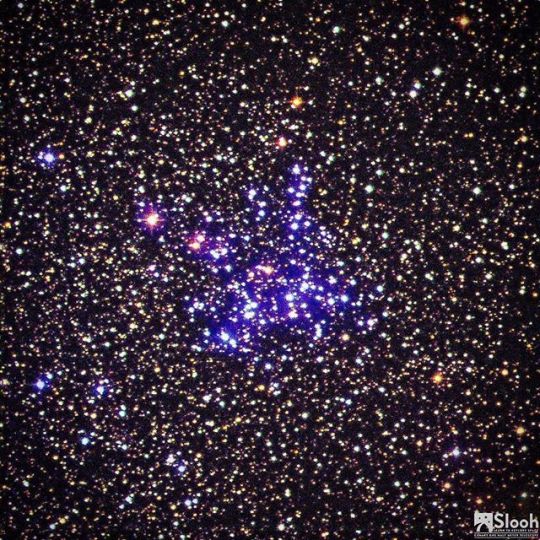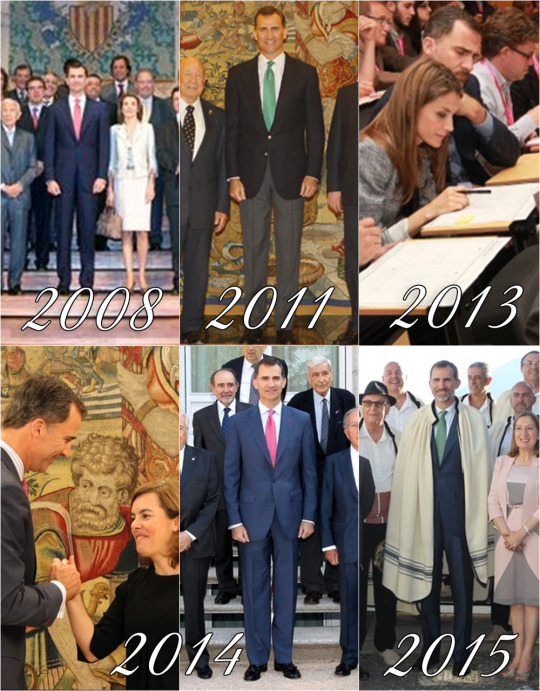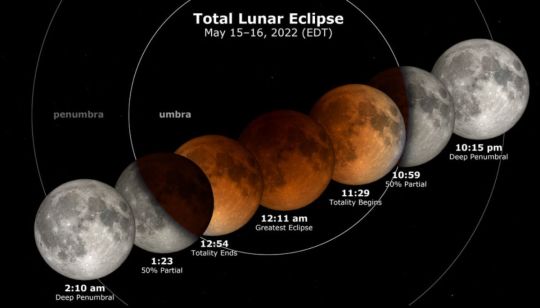#slooh telescope
Explore tagged Tumblr posts
Text




A week from now, my students at Trinity Washington University will be joining the Slooh Star Party to witness "The Blaze Star Blows Its Top" through the telescopes from Canary Island, Chile or Australia. My students truly enjoyed the treat from the "Harvest Supermoon Eclipse" last September 17, 2024. Here are a few of their photos and journals from that rare event. Thank you, Slooh!
0 notes
Text
Educator Edtech Review: Slooh | Tech & Learning
See on Scoop.it - Education 2.0 & 3.0
Slooh offers Next Generation Science Standards-aligned content and access to control telescopes at some of the best locations on the planet.
0 notes
Text
17 NEW James Webb Space Telescope Images of Outer Space!
youtube
Husband's special interest of astrophotography is still going strong even without his Slooh account. This is what's on the living room TV during our parallel play.
1 note
·
View note
Text
I’m so excited for the Slooh telescope in Australia to open actually just because I’m impatient and as it stands right now both observatories don’t open for another five hours
#AND I can’t even get sun photos rn bc it’s not a weekday :(#the only good news is that during the week most of the time I’ll be able to schedule missions again right as school gets out. so.#wont be crushed by waiting#gonna be busy drilling in tech but stop to show my friend fuckin star clusters 😭
0 notes
Text

My Top Posts in 2021
#5

This is the Skull Nebula! 💀💀💀
The glow of this eerie nebula is perfect for Halloween! This planetary nebula has a binary star system with a third star orbiting it. The beautiful colors of this nebula come from the outer layers of a Sun-like star that died in an explosion! 👻👻👻
Taken by me (Michelle Park) using the Slooh Canary Three telescope on October 28th, 2021 at 1:57 UTC.
423 notes • Posted 2021-10-28 17:26:10 GMT
#4

This is the Crescent Nebula! 🌙🌙🌙
Happy Valentine’s Day! To celebrate, here is a ❤red❤ emission nebula: its color is created by energized hydrogen. This nebula was formed by a young Wolf-Rayet star blowing stellar wind and when the star became a red giant, it energized the wind! 💫💫💫
Taken by me (Michelle Park) on February 14th, 2021 at 6:51 UTC using the Slooh Canary Two telescope.
438 notes • Posted 2021-02-14 15:04:10 GMT
#3

This is Haley’s Coronet! 👑👑👑
The interaction between the larger spiral galaxy and its dwarf galaxy have created plumes of dust around the duo. The process of the larger galaxy eating the smaller one is actually called galactic cannibalism (spooky)! 👻👻👻
Taken by me (Michelle Park) using the Slooh Chile Two telescope on January 13th, 2021 at 3:18 UTC.
521 notes • Posted 2021-01-16 13:40:35 GMT
#2

This is the Cat’s Paw Nebula! 🐾🐾🐾
This nebula is glowing due to the interactions between its hot stars and large molecules known as polycyclic aromatic hydrocarbons. This makes it particularly bright in the infrared and a common target for astrophotography in the Milky Way galaxy! 🔭🔭🔭
Taken by me (Michelle Park) using the Slooh Chile Two telescope on March 7th, 2021 at 6:38 UTC.
533 notes • Posted 2021-03-08 13:07:09 GMT
#1

This is Vega! ✨✨✨
This is the brightest star in the summer constellation Lyra and the 5th brightest star in the night sky. Infrared observations have confirmed a circumstellar disk of dust around this star, similar to the Kuiper Belt around the solar system! 🌃🌃🌃
Taken by me (Michelle Park) using the Slooh Canary Two telescope on July 5th, 2021 at 22:26 UTC.
580 notes • Posted 2021-07-06 12:57:23 GMT
Get your Tumblr 2021 Year in Review →
🤩✨💖 THANK YOU ALL FOR YOUR SUPPORT! 💖✨🤩
#my 2021 tumblr year in review#your tumblr year in review#astroprojects#astronomy#astrophysics#universe#space#night#telescope#telescopes#astrophotography#photography#star#stars#nebula#nebulae#tumblr#slooh#slooh telescope#slooh telescopes#nightsky#sky
114 notes
·
View notes
Photo

Reposted from @maes.jochen (@get_regrann) - M38 is an open cluster in the Auriga constellation, around 4200 light years from earth. At around apparent magnitude 7.4, the cluster can't be viewed with the naked eye. You'll need a telescope to be able to observe it. This is mainly due to the distance. The largest stars in the cluster are actually pretty bright at around absolute magnitude -1.5. In a post a while back (August 8th) I explained what magnitude means (the numbers). But what's the difference between apparent and absolute magnitude? Apparent magnitude is as the name suggest, the magnitude at which an object appears to us here at earth. Generally speaking, the further away something is the higher its magnitude (higher number = less bright) will be compared to if it would have been closer to us. Absolute magnitude on the other hand is the brightness of the object regardless of distance. The value for this is the magnitude an object would be when observed from a distance of 10 parsecs (roughly 32.6 light years). To give you a point of reference; the sun has an absolute magnitude of 4.83. So a star with absolute magnitude 3.83 would be 2,512 (the fifth root of 100) times brighter than that. If we go back to our M38 cluster with an absolute magnitude of -1.5; that would be 6 hops (it's a logarithmic scale). So that would be 2,512 to the 6th power; coming down to roughly 250 times as bright as the sun (excuse the lazy math). So if you ever plan a trip to M38; pack some sunglasses. posted on Instagram - https://ift.tt/2Nomk5d
#slooh#astronomer#astronomy#science#space#astrophysics#universe#cosmos#telescope#galaxy#milkyway#phot
19 notes
·
View notes
Photo




Felipe and Letizia retrospective: June 27th
2004: Athens Olympic torch relay at Puerta de Alcala square, in Madrid.
2005: Lunch offered to Israeli president Moshé Katsav
2006: Inauguration of the retrospective exhibition of the artist Manuel Valdés in Madrid and Soccer match between Spain and France for the 2006 World Cup in Hannover, Germany
2007: Audiences at la Zarzuela and Bartolomé de las Casas Award
2008: Lunch on the occasion of the celebration of the General Assembly of the Association “Sport Cultura Barcelona”
2011: Audience at la Zarzuela
2013: Forum Impulsa 2013 (1, 2)
2014: Received Doña María Soraya Sáenz de Santamaría, Deputy Prime Minister and Minister of the Presidency. & Meeting with the presidents and directors of the Royal Academies at the Institute of Spain. His Majesty met with the heads of the institutions that represent, in Spain, excellence in the sciences, arts and humanities.
2015: 30th anniversary of the Observatory of the Canary Islands and inauguration of the “Quijote” Telescopes and robotic telescopes (LCOGTN, MASTER, QES, OTA-SLOOH and MAGEC) in Tenerife.
2017: Received Slovenian President Borut Pahor at the Zarzuela Palace in Madrid and Opening of the “Neue Slowenische Kunst (NSK): From Kapital to Capital” at the National Museum Queen Sofia Art Center in Madrid.
2018: Commemoration of the “International Deafblind Day”
2019: Audiences at la Zarzuela (1, 2, 3); Audiences in Barcelona & Dinner and award ceremony of the International Logistics Exhibition Awards (SIL) in Barcelona
2021: Official dinner for the GSMA Mobile World Congress 2021 in Barcelona
F&L Through the Years: 788/??
#King Felipe#Queen Letizia#King Felipe of Spain#Queen Letizia of Spain#King Felipe VI#King Felipe VI of Spain#F&L Through the Years#June27
3 notes
·
View notes
Photo

The Exploding Galaxy is a starburst galaxy which may have been deformed by M81, another neighboring galaxy. 🌌
Starting in April 2010, the Exploding Galaxy started sending out strange radio signals and scientists to this day don’t understand them yet... 👽👽👽
Taken by me (Michelle Park) using the Slooh Canary Two telescope on April 19th, 2020 at 21:57 UTC.
#astroimages#astro#astrophotography#universe#galaxy#galaxies#explosion#exploding#aliens#starburst#space#nasa#telescope
25 notes
·
View notes
Photo

Lagoon Nebula (M8) was captured on September 11. 2020 at 23:57 UTC by Slooh Chile One telescope. This nebula is 110 light-years across and shines pink from the massive stars at its center ionizing gas. The dark blobs inside are dense clouds of dust and ga por Kiet Callies https://flic.kr/p/2jFFfRM
1 note
·
View note
Text
My two classes from Trinity Washington University and I attended a fabulous Slooh star party to watch the Harvest Supermoon tonight thru Canary Island telescopes. Thanks to hosts Paul Cox and Dr. John Boisvert and the wonderful people from Purdue University: Dave Sederberg and students. Special thanks to my students for participating! It’s cloudy in Laurel, Maryland.










0 notes
Photo


How to Watch the 2019 Total Lunar Eclipse Online (by Doris Elin Salazar, Space.com Contributor)
The total lunar eclipse of January 2019 promises to be a spectacle to behold, and may be visible to millions across North and South America, weather permitting. But if Mother Nature prevents you from seeing the moon marvel, fear not. You can always tune in to the "blood moon" on your favorite digital devices with some free webcasts.
On the night of Jan. 20, beginning just minutes after 10:30 p.m. EST (7:30 p.m. PST), the moon will noticeably, progressively get darker. The sun, the Earth and the moon will converge in an instance of perfect cosmic alignment to create a total lunar eclipse. The online observatory Slooh will host a free webcast on Slooh.com (you can sign up for a free account). We'll simulcast that feed on Space.com's homepage, courtesy of Slooh.
As the sun's rays pass through Earth's atmosphere, the light refracts. Blue light, which is visible during the daytime, gets scattered, and the red shades that accompany sunset and sunrise get cast into space. During the full moon phase, the lunar nearside is completely lit by the sun, because the moon passes over or under Earth's shadow. But occasionally, the moon travels, partially or completely, through the planet's copper-colored shadow, giving skywatchers a special treat.
If weather, location or mobility concerns prevent you from watching the eclipse directly under a clear sky, don't worry: Plenty of webcasts will broadcast the event. The online telescope service Slooh will begin its coverageat 10:30 p.m. EST (7:30 p.m. PST). "We stream it live so that people from around the world, no matter their geographical location, can witness this phenomenon together," Slooh's resident astronomer, Paige Godfrey, said in a press statement. (This webcast will also appear on Space.com's homepage.)
Godfrey and Slooh astronomer Paul Cox, plus Slooh storyteller Helen Avery, will discuss the science and cultural impact of lunar eclipses during the webcast.
The Exploratorium in San Francisco will provide live lunar eclipse Facebook, and this broadcast, like Slooh's, will begin at 10:30 p.m. EST (0330 GMT/7:30 p.m. PST) as the moon moves into the darker region of Earth's shadow, called the umbra. "The Exploratorium will broadcast a telescope view of the moon live from Pier 15 on San Francisco's Embarcadero," museum representatives announced on the Exploratorium website. The museum will be closed during the broadcast.
The Virtual Telescope Project will work with astrophotographers watching the total lunar eclipse from the United States and Panama to deliver a live feed of the stunning event beginning at 10:30 p.m. EST (0330 GMT/7:30 p.m. PST). That project is a celestial-viewing service managed by Italian astronomer Gianluca Masi.
Griffith Observatory in Los Angeles, located on the southern slope of Mount Hollywood, will also broadcast the event here, beginning when the moon rises on the West Coast, at about 8:10 p.m. EST (5:10 p.m. PST).
You can find a global map, interactive material and total lunar eclipse data on TimeandDate.com. The website will feature a livestream of its own, too. Check the Weather Channel app for another livestream, as well.
Further info/video: https://www.space.com/43048-blood-moon-2019-lunar-eclipse-webcasts.html
37 notes
·
View notes
Text
What time is the Blood Moon lunar eclipse?


A Blood Moon total lunar eclipse will occur this weekend, and here’s when to watch it.
The sun, moon and Earth will align Sunday night for a total lunar eclipse on May 15, which occurs when the Earth moves into place between the sun and the full moon. As a result, the Earth casts a giant shadow across the lunar surface, giving the moon a striking reddish hue — which is why lunar eclipses are also referred to as blood moons.
Sunday’s full moon is also considered a supermoon, meaning it looks bigger and brighter than usual because it’s at the closest point to Earth in its orbit, also known as perigee.
The total lunar eclipse will be visible from portions of the Americas, Antarctica, Europe, Africa and the east Pacific. Meanwhile, a penumbral eclipse, where the outer part of Earth’s shadow blankets the moon, will be visible in New Zealand, eastern Europe and the Middle East.
Related: How to watch the Super Flower Blood Moon lunar eclipse online
If you’re looking to photograph the moon, check out our best cameras for astrophotography and best lenses for astrophotography. Read our guides on how to photograph a lunar eclipse, as well as how to photograph the moon with a camera for some helpful tips to plan out your lunar photo session.
This NASA graphic shows the major stages of the Super Flower Blood Moon of May 2022 and their times. (Image credit: NASA)
Depending on your location, a partial lunar eclipse begins May 15 at 10:28 p.m. EDT (0228 GMT on May 16). The Blood Moon will reach its peak at 12:11 a.m. EDT (0411 GMT) on May 16 before the lunar eclipse ends at 1:55 a.m. EDT (0555 GMT). The penumbral moon phase of the eclipse will begin about an hour earlier and end about an hour after the partial eclipse, according to TimeandDate.com.
Viewers lucky enough to be in the path of the lunar eclipse will have to get outside early to witness the event. There will also be some livestreams available on YouTube from NASA Science Live, Slooh and TimeandDate.com.
Related: The stages of the Super Flower Blood Moon of 2022 explained
A visibility map for the May 15, 2022 Super Flower Blood Moon lunar eclipse. (Image credit: NASA’s Scientific Visualization Studio)
NASA’s livestream starts at 9:32 p.m. on May 15 (0132 GMT May 16). It will include a discussion on eclipses, moon science and the agency’s moon-landing Artemis program. Slooh, an astronomy learning website, will begin their webcast on May 15 at 9:30 p.m. EDT (May 16 0130 GMT). TimeandDate plans to broadcast the entire lunar eclipse, weather permitting, starting at 10 p.m. EDT May 15 (0200 GMT May 16).
This will be the first of two lunar eclipses in 2022. The next one will take place on Nov. 8, 2022 and will be visible at least partially from Asia, Australia, North America, parts of northern and eastern Europe, the Arctic and most of South America, according to TimeandDate.com.
Editor’s Note: If you snap an amazing lunar eclipse photo and would like to share it with Live Science readers, send your photo(s), comments, and your name and location to [email protected].
Follow Samantha Mathewson @Sam_Ashley13. Follow us on Twitter @Spacedotcom and on Facebook.
Today’s best deals on telescopes for viewing the Flower Moon lunar eclipse

New post published on: https://livescience.tech/2022/05/15/what-time-is-the-blood-moon-lunar-eclipse/
0 notes
Photo

This is the ABCs of Space Poster! ✨✨✨
I created this poster from one of the quests offered by Slooh and it includes galaxies, stars, and nebulae corresponding with different letters of the alphabet. You can take pictures and make your own quest posters at Slooh.com! 🤩🤩🤩
Taken by me (Michelle Park) using the Slooh Telescopes.
#astro#astronomy#astrophysics#universe#space#star#stars#astrophotography#photography#astroprojects#nebula#nebulae#slooh#slooh telescope#telescope#telescopes#nightsky#sky
92 notes
·
View notes
Link
The Lyrids Meteor Shower Will Peak in Night Skies All year long as Earth revolves around the sun, it passes through streams of cosmic debris. The resulting meteor showers can light up night skies from dusk to dawn, and if you’re lucky you might be able to catch a glimpse. The next shower you might be able to see is known as the Lyrids. Active from April 14 to April 30, it is expected to be at its peak from Wednesday night into Thursday morning, or April 21 to 22. There are records from ancient Chinese astronomers spotting these bursts of light more than 2,700 years ago. They blaze through the sky at about 107,000 miles per hour and explode about 55 miles up in the planet’s atmosphere. This shower comes from Comet Thatcher, which journeys around the sun about every 415 years. Its last trip was in 1861 and its next rendezvous near the sun will be in 2276. The Lyrids can put on a very bright show some years. According to the International Meteor Organization, your best bet to see them this year may be closer to dawn because of the current phase of the moon. [Sign up to get reminders for space and astronomy events on your calendar.] Where meteor showers come from If you spot a meteor shower, what you’re usually seeing is an icy comet’s leftovers that crash into Earth’s atmosphere. Comets are sort of like dirty snowballs: As they travel through the solar system, they leave behind a dusty trail of rocks and ice that lingers in space long after they leave. When Earth passes through these cascades of comet waste, the bits of debris — which can be as small as grains of sand — pierce the sky at such speeds that they burst, creating a celestial fireworks display. A general rule of thumb with meteor showers: You are never watching the Earth cross into remnants from a comet’s most recent orbit. Instead, the burning bits come from the previous passes. For example, during the Perseid meteor shower you are seeing meteors ejected from when its parent comet, Comet Swift-Tuttle, visited in 1862 or earlier, not from its most recent pass in 1992. That’s because it takes time for debris from a comet’s orbit to drift into a position where it intersects with Earth’s orbit, according to Bill Cooke, an astronomer with NASA’s Meteoroid Environment Office. How to watch The best way to see a meteor shower is to get to a location that has a clear view of the entire night sky. Ideally, that would be somewhere with dark skies, away from city lights and traffic. To maximize your chances of catching the show, look for a spot that offers a wide, unobstructed view. Bits and pieces of meteor showers are visible for a certain period of time, but they really peak visibly from dusk to dawn on a given few days. Those days are when Earth’s orbit crosses through the thickest part of the cosmic stream. Meteor showers can vary in their peak times, with some reaching their maximums for only a few hours and others for several nights. It is best to use your naked eye to spot a meteor shower. Binoculars or telescopes tend to limit your field of view. You might need to spend about half an hour in the dark to let your eyes get used to the reduced light. Stargazers should be warned that moonlight and the weather can obscure the shows. But if that happens, there are usually meteor livestreams like the ones hosted by NASA and by Slooh. The International Meteor Organization lists a variety of meteor showers that can be seen in 2021. Or you can find more information about some of the showers this year that are most likely to be visible below: Source link Orbem News #Lyrids #meteor #night #peak #shower #skies
0 notes
Text
Huge asteroid Apophis will safely fly past Earth tonight. Here's where to watch live online.
Huge asteroid Apophis will safely fly past Earth tonight. Here’s where to watch live online.
The big asteroid Apophis will pass safely by Earth tonight (March 5) and at least two astronomy broadcast services plan to showcase the flyby in live webcasts. While personal telescopes smaller than 12 inches in diameter will strain to see Apophis Friday, both the Slooh online observatory and the Virtual Telescope Project plan separate webcasts for the event. The broadcasts will not only discuss…

View On WordPress
0 notes